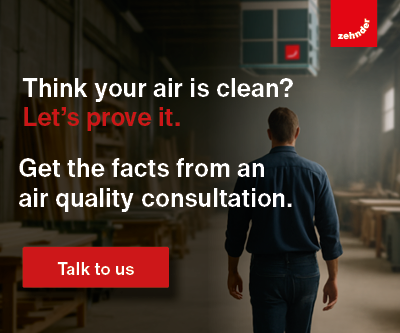Sustainability and long-term thinking are core values of Julius Blum GmbH, a world market leader in furniture fittings. The Austrian family-owned company, which was first granted ISO 14001 environmental accreditation in 1997, has implemented countless initiatives to promote sustainability within its own business and beyond under the tagline ‘moving ideas for sustainability’. As the latest UN Climate Change Conference continues, the company is now lending its voice to the ‘Vision 2045’ project.
Sustainability is a subject of huge importance to Blum. In line with the 17 Sustainable Development Goals of the United Nations, the Vorarlberg-based manufacturer of fittings has established climate protection, infrastructure, resource consumption and the work environment as key priorities for its business.
To mark the UN Climate Change Conference, which is taking place from 30th November to 12th December, Blum recently joined forces with the ‘Vision 2045’ project to produce a video showcasing its sustainability initiatives. By creating a series of documentaries of this kind, the ‘Vision 2045’ project aims to highlight the actions different businesses around the world are taking towards achieving the UN’s Sustainable Development Goals.
“We understand our responsibilities as an industry player and want to take action wherever we can,” explains company owner and CEO Philipp Blum. He then goes on to present some of the specific measures that Blum has introduced to make its business more sustainable.
Using waste heat and promoting biodiversity
One area highlighted in the documentary is Blum’s efforts to develop a sustainable energy supply: 95% of the company’s ventilation systems are now equipped with heat recovery technology, meaning that in spring and autumn the Blum plants in Austria are heated entirely using the waste heat from their production processes.
The company also uses district heating, groundwater cooling and PV systems installed at its premises. The vast majority of its buildings are compact, multi-storey structures in order to minimise land use, and in the last 40 years Blum has optimised its space utilisation by 35%. That means that for a 14,000 m2 plot, the business now boasts 50,000 m2 of usable space, saving the equivalent of five football pitches’ worth of land, which can instead be preserved as near-natural areas. Green roofs (such as those at the company’s largest Austrian plant in Bregenz) have also been an integral part of Blum’s infrastructure for more than 20 years. These roofs help to conserve biodiversity, manage rainwater drainage, act as CO2 sinks and also improve air quality.
Similar initiatives are already underway at many of the business’ other sites across the Vorarlberg region of Austria, including habitat creation projects and green façades.
Circular economy and rail transport
“The zinc sprues produced during our production process are fed directly back into the production machines or sent to our very own remelting furnace to be processed into new raw material,” says Laura Erhart, an expert in the circular economy at Blum. Any production waste that cannot be recycled internally is fed back into the material cycle by an external partner.
As Laura explains, “That means we’re using resources more efficiently and minimizing any negative impact on the environment.” Logistics is another area where Blum is working hard to minimise its carbon footprint. The company has operated its own railway siding since 2009 and currently transports around 35% of its deliveries by rail – a more environmentally friendly form of transport. Almost all the company’s fleet of HGVs has also been converted to run on biogas produced using food waste from the local region.
Environmentally friendly commuting
Last but not least, Blum is committed to raising awareness of sustainability issues among its staff. The family company has a number of exciting initiatives in place to support its employees, including its mobility concept where the business covers the costs of an annual public transport ticket for its staff.
“The ticket can be used for both commuting and leisure, so we’re encouraging people to use sustainable transport outside of work too,” explains Katharina Schön, one of Blum’s mobility experts. Blum also supports employees with the cost of buying a new bike and, as an added incentive, employees that make sustainable commuting choices can collect ‘Ecopoints’ and convert these into rewards. Before the mobility concept was introduced in 2021, 38% of employees at Blum Austria travelled to work using sustainable transport; today that figure stands at 46% on average.










